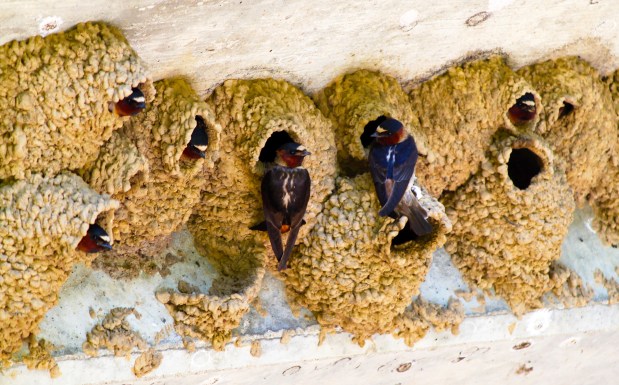With Easter, the holiest day in Christendom, a few days away, perhaps it’s time to start praying early. There are omens The Four Horsemen of the Apocalypse are stalking us.
Yep, those beings revealed in the Book of Revelation in my leather-bound $75 Donald Trump Bible’s New Testament: Famine, Pestilence, War and Death. These harbingers, definitely not of spring, may be right on end-of-time. For believers, can the rapture be far behind?
Let’s see, we’re marking the fourth anniversary of the beginning of the COVID-19 pandemic while at the same time, Lake County officials announced the first measles case since 2010 (another 31 in Cook County); there are major famine outbreaks, including among Palestinians in Gaza. Wars are raging in Ukraine and the Mideast; conflicts in other parts of the world are smoldering.
A major and rare solar eclipse, considered a portent of bad news by earlier civilizations, is coming April 8. To top these auguries is the impending invasion of upward of a billion (!), in one estimate, of creepy-looking cicadas singing their decibel-breaking siren calls for wild insect debauchery.
Then there’s the ongoing presidential election which alone is worth a severe case of the Heebee-jeebees or a frightful attack of the fantods. Yikes!
There’s enough bad juju coming our way to indicate the prophecies of the ancients may be coming true in the 24th year of the millennium. There must be some end-of-days calendar that has the number 24 in the trifecta of lost predictions.
Oops, forgot the “Devil comet” — Pons-Brook — which is headed our way and will be visible, perhaps with the naked eye, for the first time in 71 years, when Ike was in the White House. Its satanic name, scientists say, comes from when the comet becomes suddenly bright and it takes the shape of the devil’s horns.
Not making this stuff up. It’s happening now. You could look it up.
This isn’t mumbo-jumbo. Nor am I usually a Chicken Little running around squawking about weird objects falling from the sky.
Yet, the signs are all around us. Was angst about this shaky future cause of the historically low turnout in the March primary election? Could be.
The last total solar eclipse happened around five years ago, deep in the first term of President Donald Trump. Then consider what happened: COVID-19 and a pestilence we’re still dealing with as medical experts suggest continuing with booster shots to keep our immunity against the coronavirus.
According to NASA, a total solar eclipse happens when the moon passes between the sun and Earth, completely blocking the face of the sun. The celestial event early next month will be viewable from several states throughout the Midwest, South and Northeast.
Far downstate Carbondale, home to the Southern Illinois University Salukis, reportedly is one of the best places to see the eclipse, which will blot out the sun for about four minutes. The last one was in 2017 and Carbondale also was in the path of totality.
The Chicago region will get a partial eclipse, with the moon covering nearly 95% of the sun. That is if it’s not cloudy.
Even a partial eclipse is enough for a solid case of the jitters. With all of these signs swirling around the globe, the one most worrisome should be Cicadapalooza.
Consider an invasion of two broods of cicadas emerging from the underground habitats they’ve occupied for years with clockwork at the same time. It’s the first such convergence of the two broods in 221 years.
That last hook-up was in 1803 when Thomas Jefferson was president. Then look what happened: Jefferson’s vice president, Aaron Burr, killed Alexander Hamilton, the nation’s first secretary of the treasury, in a duel.
See, there are consequences from these forewarnings.
In 1956, entomologists reported as many as 311 “emergence holes” per square yard in a forested floodplain near Chicago. That translated to 1.5 million cicadas per acre.
Having spent almost two decades underground eating yummy tree root sap, the bugs will crawl out between May and June, or when the soil temperature hits around 64 degrees. The last time cicadas invaded the region with less numbers, in 2004, some towns had to use snowplows to move the creatures off the sidewalks.
At the same time, the din was at times unbearable. It was like thousands of tiny leaf blowers inside your ears whining in unison. Doesn’t that give you the willies?
The alerts have been issued to what’s ahead as the forecasts are before us. You can head to the bunkers, leave town for safer locales — if there are any — or pray. Perhaps you’ll see me in church on Easter Sunday.
Charles Selle is a former News-Sun reporter, political editor and editor. sellenews@gmail.com. X @sellenews



